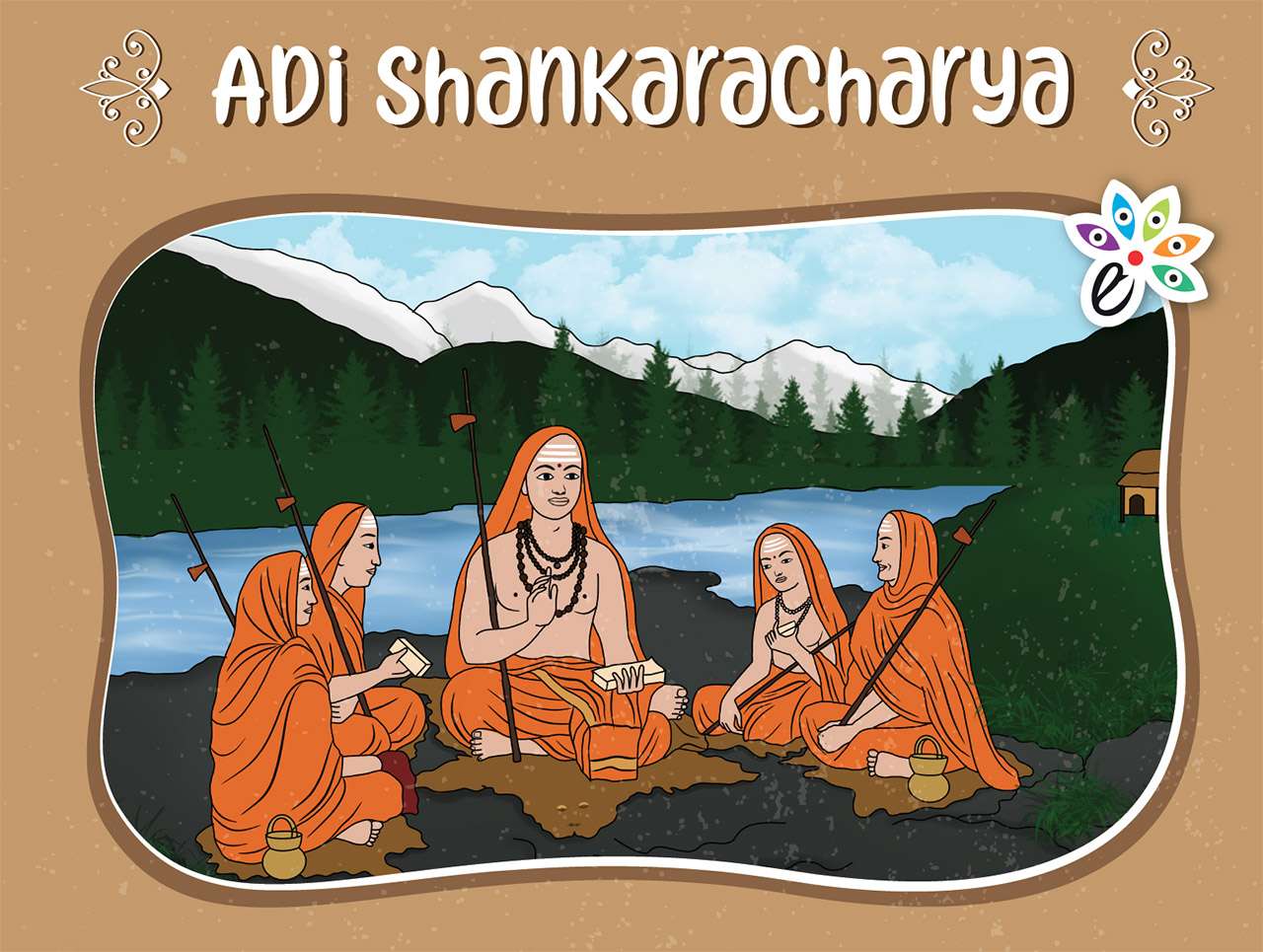
Over the centuries, Hinduism has witnessed its ups and downs. Hinduism shone at its finest during the Vedic period, after which it witnessed a downfall with the rise of Buddhism and Jainism. To revive the religion emerged Shankara, who was said to be an incarnation of Lord Shiva himself.
Adi Shankaracharya in Short
Shankara, also known popularly as Shankaracharya or Adi Shankaracharya, was one of the most prolific Hindu saints and philosophers who lived during the seventh century AD. He was a proponent of Advaita Vedanta, a branch of Hindu philosophy that believes in the oneness of the Brahman and his creation. He revived the Hindu religion at a time of decline, traveling all over India to spread the wisdom of Advaitha, establishing Math or centers for the study and dissemination of Advaita and authored several seminal works and commentaries on the basics of the philosophy and important texts in the Hindu religion.
Essay About Shankaracharya
A thousand years ago in Kalady, Kerala, there lived a couple- Shivaguru and Aryamba, known for their piety and devotion to Lord Shiva.
One day, Shivaguru and Aryamba set out for the temple of Chandramouleshwara in Trichur on a pilgrimage. They prayed earnestly and slept, but that night, they had the same strange dream.
Lord Shiva, disguised as a saint, asked them a question- did they want many ordinary sons or just one extraordinary son who would shine short but very bright? Both of them knew what they wanted-just one extraordinary son, and they told him so.
A few months passed, and Aryamba gave birth to a truly extraordinary child. He was perfect in all ways. He was named ‘Shankara’.
Shankara was blessed by the Gods, and it showed since he was a child. When his mother became too weak to walk to the river after his father’s death, he diverted the river to flow past his house by constructing an embankment as a young boy.
At the tender age of eight, Shankara, with difficulty, got permission from his mother to become a Sannyasa and left home in search of a Guru. He traveled throughout the length and breadth of Bharat.
After a few years’ search, Shankara spent a few years under Govinda Bhagavadapada, after which he got a vision from Vyasa himself to leave and look for greater things.
Thus, Shankara stayed for a while in Varanasi, initiating several poets, scholars and even ordinary people into his order of sannyasis.
After a few years in Varanasi, he left for the extreme North, to the Himalayas and beyond. He spread the wisdom of Advaita Vedanta, a sect of Hindu philosophy that believes in the oneness of the Brahman(God) and the self.
During this time, he challenged and defeated several scholars and philosophers of other sects too. It is at this time that he was also said to have revived the dying body of a king with his soul, in order to understand the life of a householder and monarch for a complete understanding of life.
During this time, he established four mathas- four centers of spiritual learning in the North, South, east and West for the dissemination of the knowledge of the four Vedas. These were located in Badrinath, Sringeri, Dwaraka and Puri respectively.
Shankara’s teachings were accessible to everyone. He believed that spiritual attainment was the highest goal or designation rather than caste or the blind practice of rituals.
Shankara lived a short life- all of thirty two years. At this time, however, he revived Hinduism and truly opened the eyes of the people of India to the beauty of the Hindu religion.
Shankara authored several precious works that are seminal for an understanding of the Hindu religion. He authored commentaries on the Bhagavad Gita, the Brahma sutras and the upanishads, some of the most important texts in Hinduism. He also wrote several works on the basics of Advaita in order to make them more accessible.
Shankara was not just a philosopher, but also a poet. He wrote several beautiful hymns, rich with wit and wisdom and in praise of the brahman. These include Bhaja Govindam, Soundarya Lahiri and Nirvana Shatakam
FAQs About Shankaracharya
1. Where was Shankaracharya from?
Shankaracharya was from Kalady, Kerala.
2. Who were the parents of Shankara?
Shankara’s parents were Shivaguru and Aryamba.
3. What branch of philosophy did Shankaracharya believe in?
Shankaracharya was a believer of Advaita Vedanta.
4. What were some of the most famous works of Shankaracharya?
Vivekachudamani, Atma Bodha, Panchikarana, Nirvana Shatakam, Vakya Vritti
5. Who were some of the influential disciples of Shankaracharya?
Sri Hastamalakacharya, Sri Totakacharya, Sri Padamapadacharya, Sri Sureshwaracharya. They were also the heads of the four math that Shankaracharya established across India.
6. What were the four math that Shankaracharya established?
Jyotirmath in Joshimath, Sringeri Sharada Peeth in Chikmagalur, Kalika Mutt in Dwaraka and Govardhan Math in Puri. These were meant for the Northern, Southern, Western and Eastern regions of the country respectively.
Five Lines on Adi Shankaracharya

Conclusion
Shankaracharya was one of the most influential Hindu philosophers to have ever existed. His name has a rich legacy in the field of Advaita and he deserves to be remembered by all practicing Hindus today, for he strengthened and changed the religion for the better.





